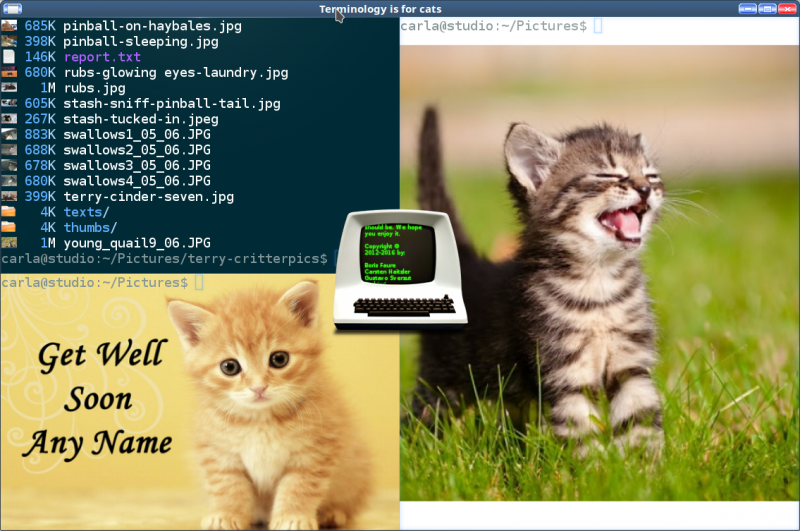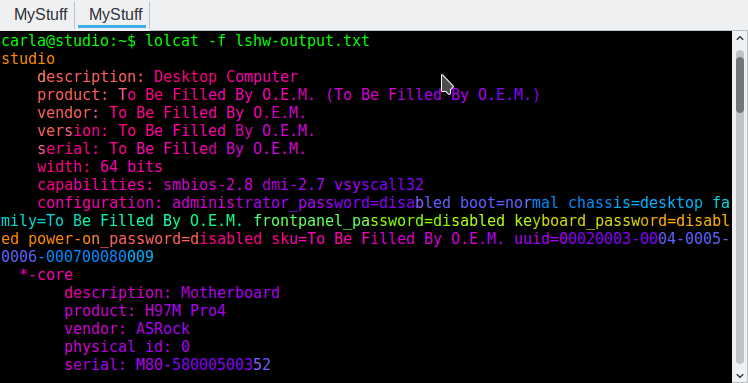Home >System Tutorial >LINUX >5 Coolest Linux Terminal Emulators!
5 Coolest Linux Terminal Emulators!
- PHPzforward
- 2024-02-24 10:34:211352browse
First of all, the first terminal I want to recommend is Xiki. Xiki is the brainchild of Craig Muth, a talented programmer and a funny guy (fun here means humor, but probably other things too). I introduced Xiki a long time ago in the article Meet Xiki, the revolutionary command line shell under Linux and Mac OS X. Xiki is more than just another terminal emulator; it's an interactive environment that extends and speeds up the command line.
Xiki supports the mouse and is supported on most command line shells. It has extensive on-screen help and can be quickly navigated using the mouse and keyboard. A simple example of this in speed is the enhancement of the ls command. Xiki can quickly traverse multiple levels of directories on a file system without having to repeatedly type ls or cd, or use those clever regular expressions.
Xiki integrates with many text editors, provides a permanent note, has a fast search engine, and, as they say, tons of features. Xiki is so unique and different that the fastest way to learn and understand it is to watch Craig's fun and practical videos.
I recommend Cool Retro Term (as shown in the title picture) mainly because of its appearance and its practicality. It takes us back to the days of cathode ray tube displays, which wasn't that long ago, and while I'm not feeling nostalgic, I will never give up my LCD screen until I die. It is based on Konsole, so it has the excellent functions of Konsole. You can change the appearance of Cool Retro Term through its profile menu. Profiles include Amber, Green, Pixelated, Apple, and Transparent Green, among others, and all include a scanline that looks like the real thing. Not all of it is useful, for example the Vintage profile looks like an old flickering spherical screen.
Cool Retro Term's GitHub repository has a detailed installation guide, and there is a PPA for Ubuntu users.
If you want an excellent lightweight, easy-to-configure terminal, you can try Sakura (Figure 1). It has few dependencies, unlike GNOME Terminal and Konsole, which involve many components in GNOME and KDE. Most of its options are configurable through the right-click menu, such as tab labels, color, size, default number of tabs, fonts, ringtones, and cursor type. You can set more options, such as binding shortcut keys, in your personal configuration file ~/.config/sakura/sakura.conf.

Figure 1: Sakura is an excellent, lightweight, configurable terminal.
For details on command line options, see man sakura. You can use these to launch sakura from the command line, or use them on your graphical launcher. For example, open 4 tabs and set the window title to "MyWindowTitle":
$ sakura -t MyWindowTitle -n 4
Terminology comes from the lush and lovely world of Enlightenment graphical environments, which can be beautified to look anything you want (Figure 2). It has many useful features: independent split windows, opening files and URLs, file icons, tabs, the list goes on. It even runs on a Linux console without a graphical interface.

Figure 2: Terminology can also run on a Linux console without a graphical interface.
When you open multiple split windows, each window can set a different background, and the background file can be any media file: image file, video or music file. It comes with a bunch of dark themes and transparent themes for legibility, and it even has a Nyan cat theme. It has no scroll bars, so you need to use the key combinations Shift PageUp and Shift PageDown to navigate up and down.
It has multiple controls: a right-click menu, context dialog box, and command line options. The right-click menu contains the world's smallest fonts, and Miniview displays a microscopic tree of files, but I didn't find an option to make them legible. When you have multiple tabs open, you can click the small tab browser to open a selector that you can scroll up and down. Everything is configurable; man terminology provides a list of commands and options, including a nice collection of shortcuts. Oddly, the help doesn't include the following command, which I stumbled across:
- tyalpha
- tybg
- tycat
- tyls
- typop
- tyq
Use the tybg [filename] command to set the background, and the tybg command without parameters to remove the background. Run typop [filename] to open the file. The tyls command lists files in icon view. Run these commands with the -h option to see what they do. Even with its readability quirks, Terminology is fast, beautiful, and useful.
There are already several excellent drop-down terminal emulators, including Guake and Yakuake. Tilda (Figure 3) is the simplest and lightweight one. Once you open Tilda it will stay open and you can show and hide it using shortcut keys. Tilda shortcut keys are set by default, you can set your own favorite shortcut keys. It's always open, ready to work, but not there until you need it.

Figure 3: Tilda is the simplest and lightweight terminal emulator.
Tilda options are well supplemented, including default size, position, appearance, key bindings, search bar, mouse actions, and tab strip. These are controlled by the right-click menu.
Learn more about Linux through the free course "Introduction to Linux" from the Linux Foundation and edX.
The above is the detailed content of 5 Coolest Linux Terminal Emulators!. For more information, please follow other related articles on the PHP Chinese website!

